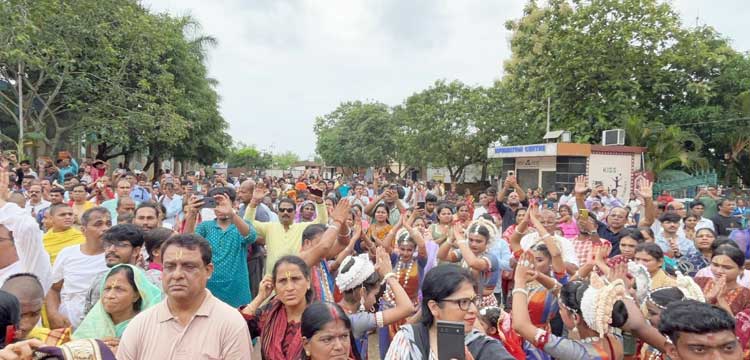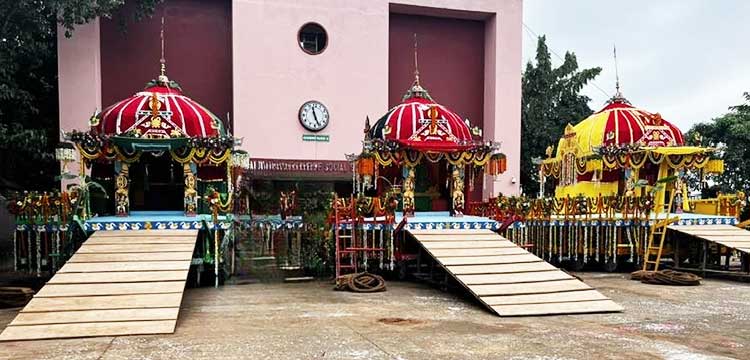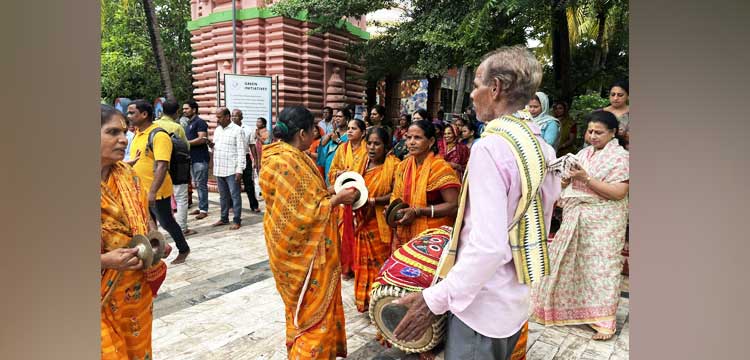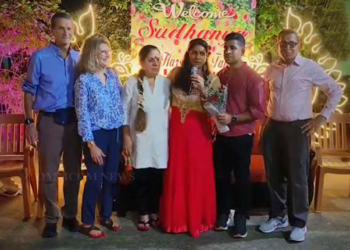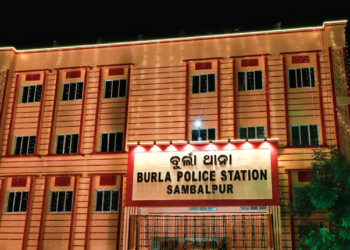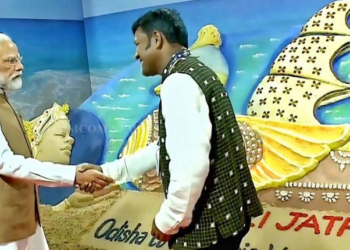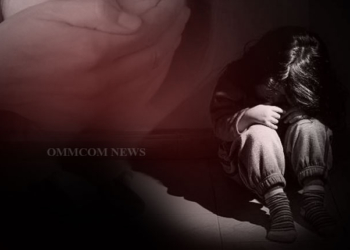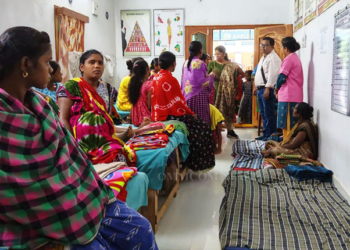As thousands gathered at KIIT Jagannath Temple on Friday to celebrate the sacred Rath Yatra, one powerful sight stood out amid the sea of chanting devotees and colourful chariots — the chariot of Goddess Subhadra, pulled almost entirely by women. Dressed in vibrant sarees and bright smiles, women of all ages held the ropes with pride and devotion, turning a spiritual moment into a moving symbol of empowerment.
In a temple that strictly follows the age-old rituals of the Puri Jagannath Temple, this all-women tradition has carved a special identity for KIIT’s Rath Yatra since 2007.
“This ritual started here with the idea that Goddess Subhadra’s chariot would be pulled only by women,” said Dandapani Moharana, the temple’s chief carpenter who supervises the making of all three chariots. “It is our way of showing respect to the goddess and honouring the strength and devotion of women.”
The majestic chariots — 23 feet 6 inches tall for Lord Jagannath, 23 feet for Lord Balabhadra, and 22 feet 9 inches for Devi Subhadra — are handcrafted by skilled artisans from Buguda village in Ganjam district. Construction starts on the auspicious day of Akshaya Tritiya and is completed just before Rath Yatra. While all three chariots are a sight to behold, it is Subhadra’s Rath — pulled solely by women — that often becomes the emotional centre of the celebration.
“Our Rath Yatra began in 2007 and all rituals have been followed properly since then,” said Santosh Kumar Satpathy, the temple’s Chief Priest. “What makes it special is that people of all ages are welcome to pull the chariots, but here, women are more enthusiastic — especially when it comes to pulling Devi Subhadra’s Rath. Even in big crowds, they step forward. That is our speciality — men are there, but it is the women who lead.”
The KIIT Jagannath Temple — also known as Sribani Kshetra — was built in 2006 and began celebrating Rath Yatra officially from 2007. Over the years, the festival has grown into a grand event, bringing together students, staff, villagers, and devotees from all over Bhubaneswar.
Unlike many temples in cities that use a single Rath for all three deities, KIIT follows the traditional practice of having three separate chariots — just like in Puri. The Divine Siblings — Lord Jagannath, Lord Balabhadra, and Devi Subhadra — are taken in a procession that covers around one kilometre, from the main temple to the Gundicha Temple, built in 2020 near Infocity Police Station.
“We wait all year for this one day,” said Shakuntala Behera, a resident of Pathargadia village. “But what makes it even more special is that women get the rare honour of pulling the goddess’s Rath. It fills us with strength and joy.”
This spontaneous yet steady participation of women has given the Rath Yatra a unique energy. Many believe it reflects the divine feminine power of Subhadra and shows how faith can break barriers without breaking tradition.
With colourful dupattas flowing and chants echoing in the air, women stood shoulder to shoulder — smiling, praying, and pulling together. For some, it was a deeply spiritual moment. For others, it was a shared celebration of togetherness and tradition.
“I have been pulling Subhadra’s chariot for the past three years,” said Laxmipriya Mohanty, another resident of Pathargadia. “There is something sacred and peaceful about holding that rope. It connects you to the goddess in a way words cannot explain.”
This year marked the 19th Rath Yatra at KIIT. Over time, the event has become more than a religious festival — it is a celebration of inclusion, equality, and shared devotion. The tradition of women pulling Subhadra’s chariot is not just symbolic — it is powerful, heartfelt, and rooted in respect.
“This is not about breaking rituals — it is about embracing them in a way that honours everyone,” said the Chief Priest.
As the Rath rolled forward, flower petals showered from above, drums echoed, and chants filled the air. And at the heart of it all were the women — leading with faith, walking with pride, and holding the sacred ropes with unshakable devotion. In that moment, faith, femininity, and festivity came together in perfect harmony.




